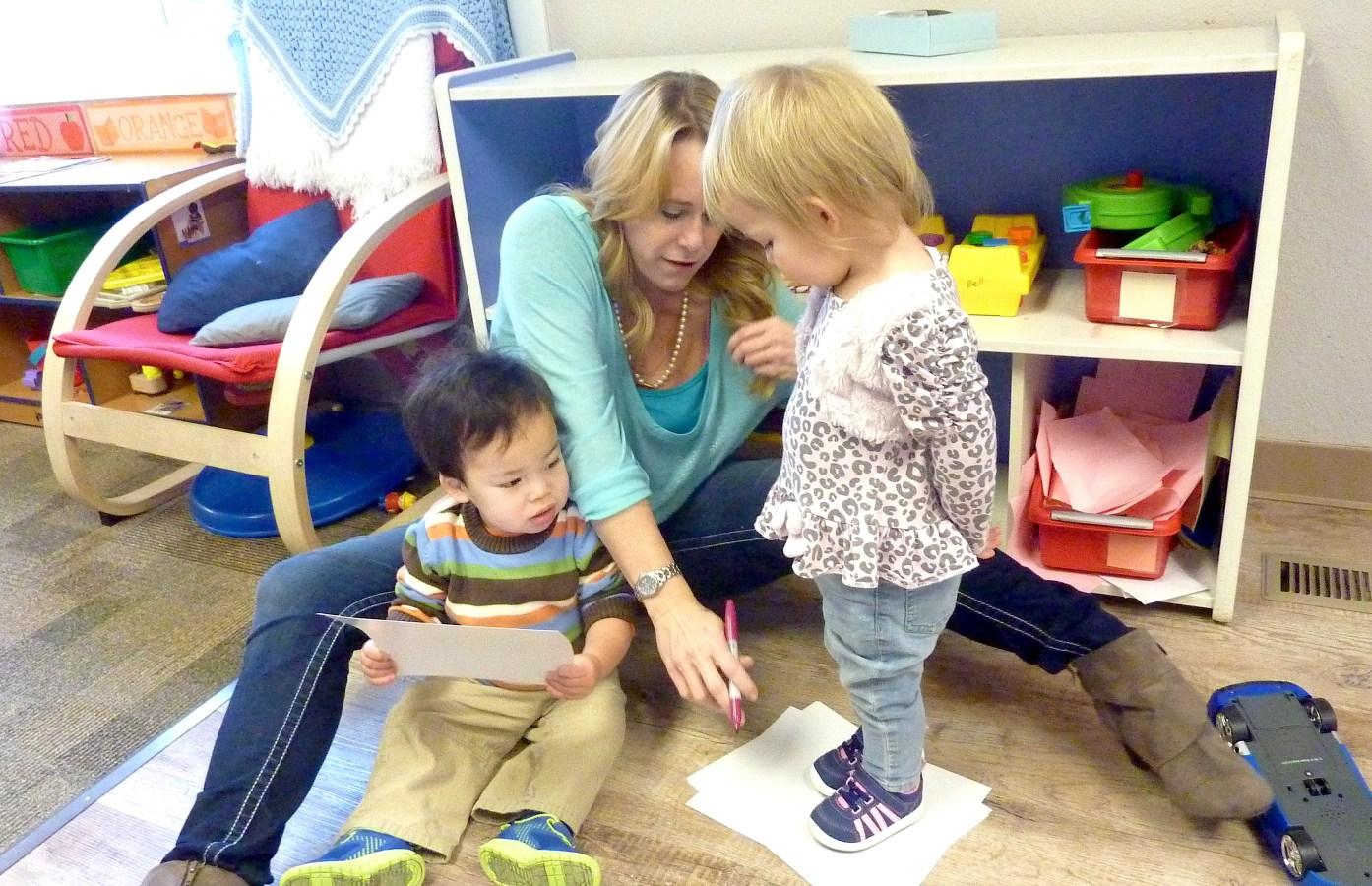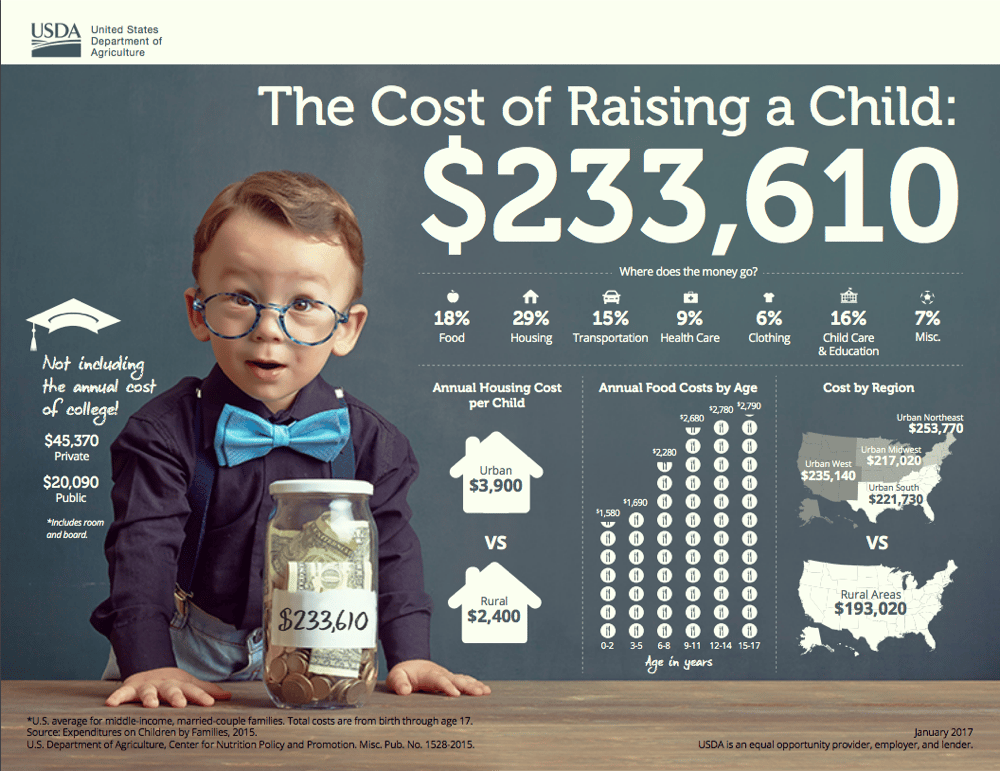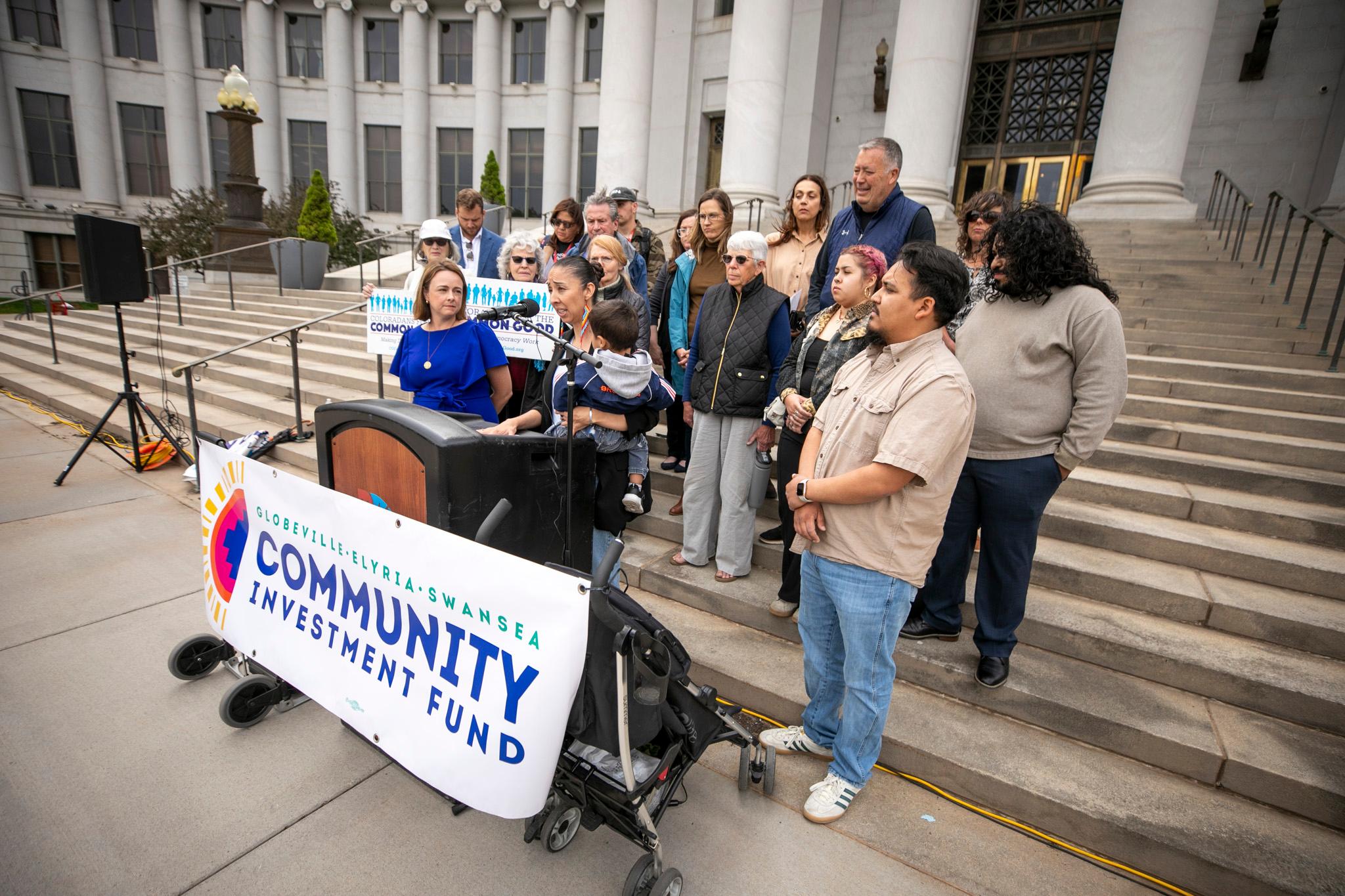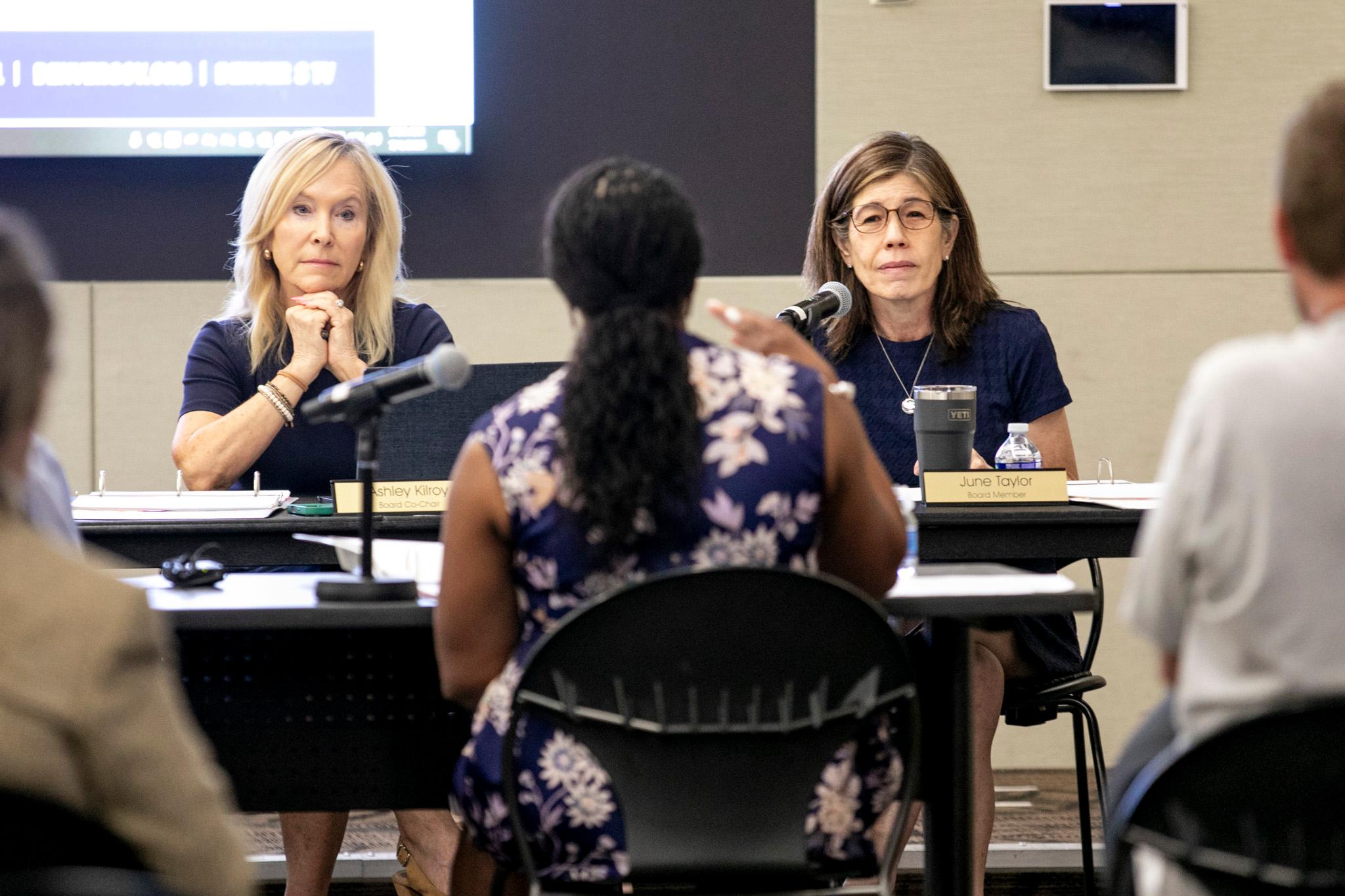
Families in Colorado and the other 12 states that make up the West can expect to shell out more in child-rearing costs than the nation overall, according to a new report from the U.S. Department of Agriculture.
Food, housing and other basic needs that children require are costing married, urban Western families between $175,950 and $235,140 depending on their household income. Cities in the West are the second-most expensive place in the country to raise a child after the Northeast, according to the report released this month.
The report only looks at raising a child from birth through age 17 in 2015 dollars — that means parents can expect to pay more if they plan to cover the growing cost of college for their child.
“The Cost of Raising a Child” doesn't break out how much having more than one child costs or what single parents pay by region. On average, single parents spend less on children rearing.
Single parents with before-tax incomes less $59,200 on average spend $172,200 on a child. That's compared to $174,690 spent by two-parent households in the same income bracket.
But kids might be a harder hit on singles' wallets.
"Because single-parent families have one less potential earner, their total household income is lower and child-rearing expenses consume a greater percentage of income," the report states.

There are a few head-scratchers in the report. For example, families with higher incomes can expect to spend more and on paper, it looks cheaper, per child, to have more children.
“There are significant economies of scale, with regards to children, sometimes referred to as the ‘cheaper by the dozen effect.’ As families increase in size, children may share a bedroom, clothing and toys can be reused, and food can be purchased in larger, more economical packages,” said USDA economist Mark Lino, in a statement.
Subscribe to Denverite’s newsletter here. Business & data reporter Adrian D. Garcia can be reached via email at [email protected] or twitter.com/adriandgarcia.










